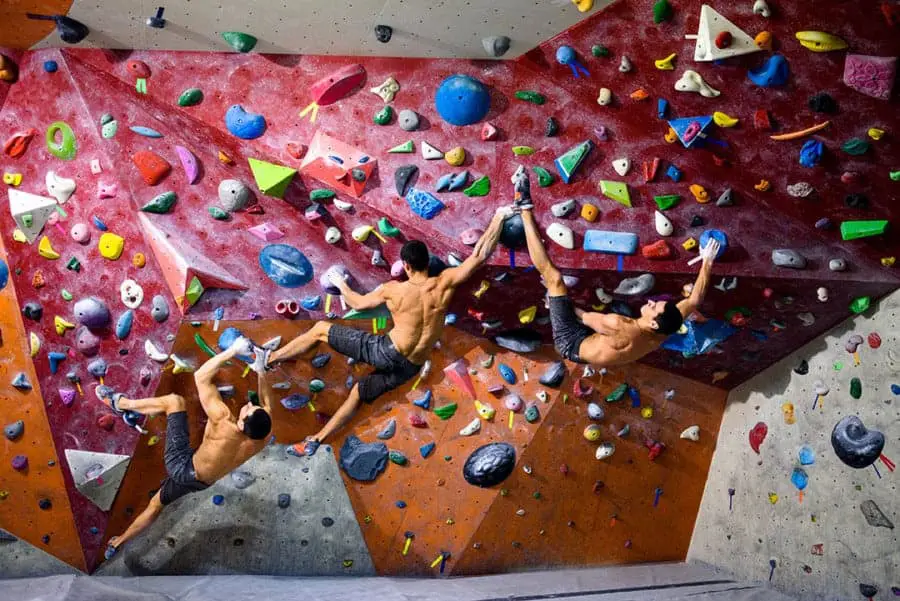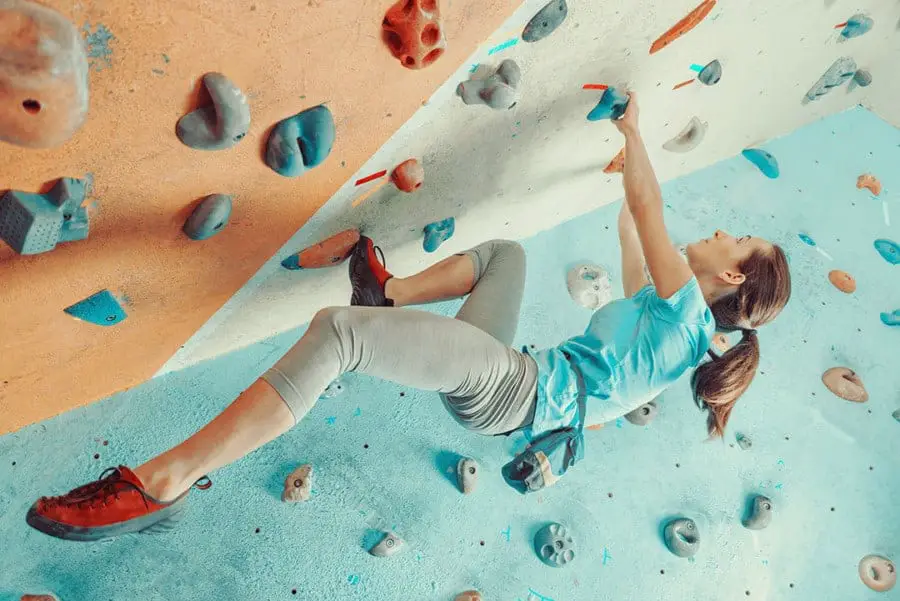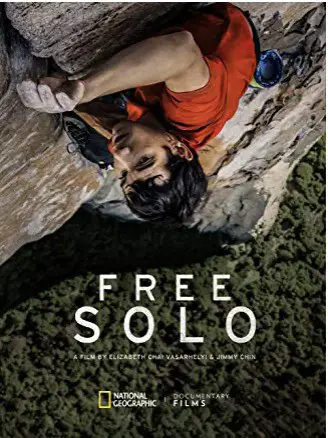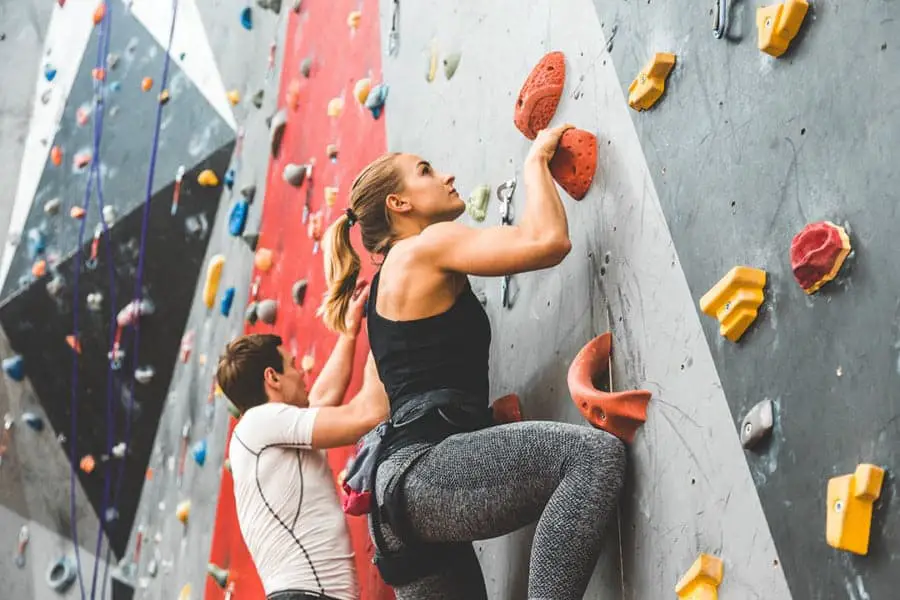The definition of sport, according to the dictionary is: an activity involving physical exertion and skill in which an individual or team competes against another or others for entertainment.
Climbing is a sport as it uses significant physical exertion, skill, is competitive and is showcased on television for entertainment. Not only does climbing meet the qualifications outlined by definition, it’s also debuting in the Olympics at Tokyo in 2021.
If you’re new to the climbing world, you may be wondering how climbing meets the four qualifications outlined in the dictionary, which is why I’ve provided that information for you below. Including how the climbing in the famous documentary Free Solo fits into the sport.
Qualification #1: Does Climbing Require Physical Exertion?
Climbing, according to scientific studies that make up the Metabolic Equivalent of Task (MET) value scale suggest that not only is climbing physically exerting, it is among the high-intensity workouts.
Met value is broken into three categories:
- Low intensity (less than 3.0 on the MET scale) such as sitting at your desk and typing or watching TV
- Moderate intensity (between 3.0 and 6.0 on the MET scale) such as yard work and leisurely swimming laps
- High intensity (greater than 6.0 on the MET scale) such as running and calisthetics
On the met scale, climbing is an 8.5/10.0 on the MET scale, which means that it has been identified as requiring significant physical exertion.
Like any activity, of course, easier climbs require less energy and things like repelling down a route have been identified as a 5.6/10.0 MET value, which is moderate intensity. This means that like many activities, the harder you are climbing, the more physically exerting it’ll be.

Qualification #2: Does Climbing Require Skill?
The harder the climb is, the more skill involved with completing it. Like in many activities, there are different levels of climbing. At the base level, children at the age of three can complete climbs and these routes require less skill. However, the higher the level of climbing, the more skill is required.
This leveling system is called Grades in climbing. Depending on what part of the world you are in, you may use a different grading system.
In the United States, bouldering (a type of climbing that uses shorter routes without a rope system for safety) uses what is called a V Scale. For roped climbs (such as top-rope, sport climbing and trad climbing), a YDS scale is used to indicate the difficulty of the climb and how much skill is involved.
- V Scale: This indicates the difficulty of the climb by putting a number from 0-16 after V. A V0 is significantly harder than a V6. Though the scale goes goes all the way up to V16, very few climbers in the world have ever climbed routes that difficult.
- YDS Scale: This indicates the difficulty of the climb by putting a 5 (indicating both hands and feet are required to complete the route – not like a hike) and then it is followed by a decimal and another grade of difficulty from a 1-15 as well as an a, b, c or d, which further breaks down the grade. A child can often climb a 5.1 but only a few climbers in the world have been able to complete a 5.15c
According to International Rock Climbing Research Association, the following breaks down grades in comparison to the level of the climb, such as lower level, intermediate, advanced and elite skill required next to the grade associated with the climb (like the V and YDS grades outlined above).
Qualification #3: Does Climbing Include Individual or Team Competitions?
Though climbing has been arround since the time of cavemen and climbing competitions have been around since the 16th century, it wasn’t until 1986 when a competition in Bardonecchia, Italy hosted the first lead climbing competition in an event called SportRoccia.
Since then, three different disciplines/formats of climbing has entered the climbing competition scene:
- Bouldering Competitions: Most bouldering competitions comprise of 5 boulder problems in each round. Each climber gets 4 minutes for each route and gets points based on the number of attempts and the time it takes to complete the route. The climber who completes the most routes in the least amount of time and attempts, wins.
- Sport Climbing Comptitions: Probably the most commonly known climbing competitions are sport climbing competition. The climber has 6 minutes and one attempt to climb as high on the route as possible. The climber that gets the furthest and in the shortest amount of time wins.
- Speed Climbing Competitions: Speed climbing is a much newer discipline in climbing and is very contriversial in the olympics because the skill and muscles required to speed climb is significantly different than bouldering and sport climbing. The route remains the same for every competition and the climber who reaches the top the fastest, wins. The speed record in a competition for men is 5.47 seconds set by Reza Alipourshenazandifar from China in 2017 and the speed record for women is 6.96 set by Luliia Kaplina from Russia.
Over the years, these competitions have been separated and local, regional, national and international competitions have featured just one of the formats. However, in the last decade, there have been many combined-format competitions that includes bouldering and sport climbing.
However, with 2021 Tokyo Olympics combining all three climbing disciplines (bouldering, sport climbing and speed climbing) olympic qualification tournaments have included all three disciplines. The climber with the highest combined points wins.
Climbers compete individually but in world competitions, they also represent the country that they come from. Each country competing in the Olympics for climbing will have a maximum of four competitors, two men and two women for a total of 40 competitors.
Unlike most countries competing in the Olympics, however, the USA climbing team doesn’t get any funding from the government and is dependent on companies to sponsor the team and/or individual climbers.

Qualification #4: Is Climbing Considered Entertainment?
The general sense of what qualifies for entertainment is something that other people watch. This can be as simple as a film or as big as a stadium of people watching the event. Another means of looking at what qualifies as entertainment is anything that it is done “for fun” and not as a “necesity to live.”
Climbing meets both of these definitions of entertainment. Though climbing was a means for survival back in the day to get food or water, it has not become an activity that people do and watch for fun.
Climbing competitions have an audience not only in stadiums but have also been broadcasted on TV for over a decade. Films such as the documentary called Free Solo, which is one of the highest grossing documentaries about climbing has been watched by hundreds of thousands of people around the world.
In addition, huge sport networks such as ESPN has broadcasted all of the Olympic Qualification competitions live, which was an historic moment for the climbing world in the United States.
Is Climbing In The Olympics?
Climbing is debuting in the 2020 (now 2021) Tokyo Olympics. Up to two men and two women will represent their country with a total of 40 competitors. The sport will be showcasing bouldering, sport climbing and speed climbing.
- Bouldering: Usually bouldering competitions have 4 minutes for each set route. That is likely going to be the same for the Olympics but the Olympic website says “athletes climb as many fixed routes as they can within four minutes,” which could suggest that they will climb multiple routes in a total of four minutes. One thing that is the same with the Olympics and world cup competitions is that climbers aren’t allowed to attempt the routes before the time starts and they won’t be able to see others climb it either.
- Sport Climbing: In the Olympics, they are calling this lead climbing. Like all world competitions in climbing, each competitor attempts the over 15-meter high wall. The goal is to go as high as possible without falling and the winner is the one that makes it the farthest, fastest. One tricky part of lead climbing is that you have to bring the rope up with you and use what’s called quickdraws to attach the rope to safety bolts along the route. In on Olympics qualifications, one of the competitors, Adam Ondra, accidentally stepped on a bolt and was disqualified from the competition (he later took first place in another qualifying competition to win his spot at the Olympics representing the Czech Republic)
- Speed Climbing: This is one of the more entertaining disciplines in the sport because each round is over in a matter of seconds. Unlike the other two climbing disciplines, the climbers have had a chance to practice and train on the exact same route for decades (though some of the competitors will have significantly less experience). Many climbers feel that it is unfair to include this in the same scoring system for a combined score because it takes more memory and quick movement to get up a 15-meter wall that is at a 95-degree angle. It has been announced, however, that the 2024 Olympics will showcase this discipline in a separate event with separate medals for winners.
Is Outdoor Climbing or Free Soloing Considered A Sport?
Some have argued that Alex Honold’s El Capitan ascent in the famous Free Solo documentary was a competition to reach the top in the fastest time and thus counts as a sport. However, since the competitors were not clear, it doesn’t count as a competition.
This doesn’t mean that free soloing or outdoor climbing isn’t a sport however. It is a branch of the sport, just not a competitive branch of the sport.
Watch Free Solo on Amazon Prime

More Trending Topics Like This:
- What Happened During The Men’s 2021 Climbing Olympics?
- Who Are The Climbers Competing In The Tokyo Olympics 2021?
- Is Climbing A Sport?
- How Many Calories Do You Burn From Climbing?
- 17 Reasons Why Bouldering Is So Popular
- The Evolution Of Climbing Belay Devices
- 23 Storage Ideas For Your Climbing Gear
- Why Is Climbing Such A Mental Sport?
- The Best Way To Take Climbing Chalk Through Airport Security
- Is Bouldering That Hard? Yea, It’s Hard – This Is Why
- Is Climbing Considered A Sport
- Is Climbing And Bouldering Good For Cardio?
- Top 10 Home Climbing Gym Designs
- 9 Signs You’re Seriously Addicted To Climbing
- Why Do People Like Climbing?
- What You Need To Know About Climbing In The 2021 Tokyo Olympics
- Can Climbing Build Abs And Make You Look Chiseled
- How To Introduce Your Friends To Climbing (15 Steps)
- Tips For Handling Your Period While Climbing
- Is Bouldering Outdoors Harder Than Indoors?
- Can You Go Rock Climbing Outdoors During The Covid 19 Pandemic?
- 7 Reasons To Wear Socks With Climbing Shoes
- What Is Dabbing? | Climbing Vocabulary And Culture
- Bouldering Vs Climbing: Training, Skills, Strength, Grades
- Indoor Vs Outdoor Climbing: A Thorough Comparision
- 22 Health Benefits Of Climbing – Backed By Research
- Bouldering And Sports Climbing Glossary: Lingo And Language
- Quick Tips For Getting Back Into Climbing After A Long Break
- 10 Legit Reasons You Should Not Rock Climb
- Can Climbing Build Muscle And Replace Weight Training?
- Do You Wear Socks With Rock Climbing Shoes?
- Is Bouldering Dangerous?
- What Should You Record In A Climbing Journal?
- How Are Climbing Routes Graded?
- First Time At The Bouldering Gym – What You Should Know
- 7 Common Mistakes In Rock Climbing For Beginners
- How Do Alpinists Get Down?

